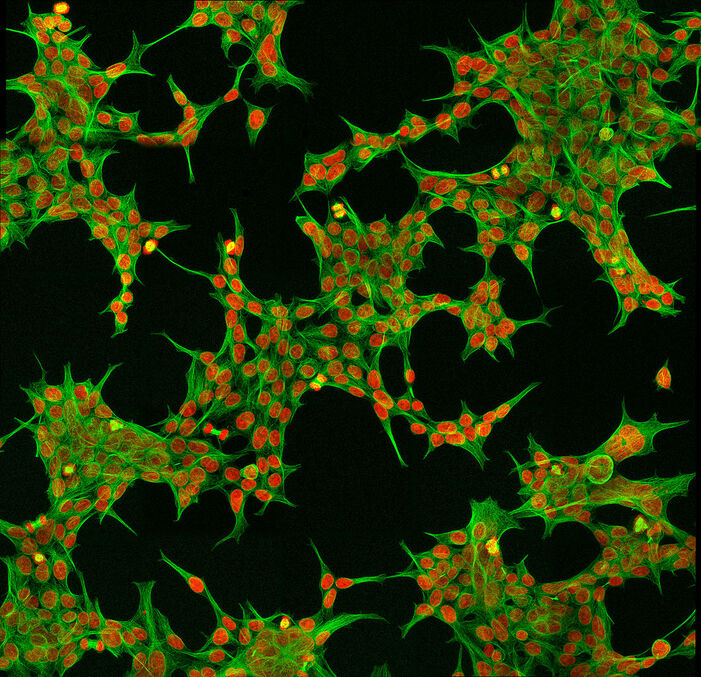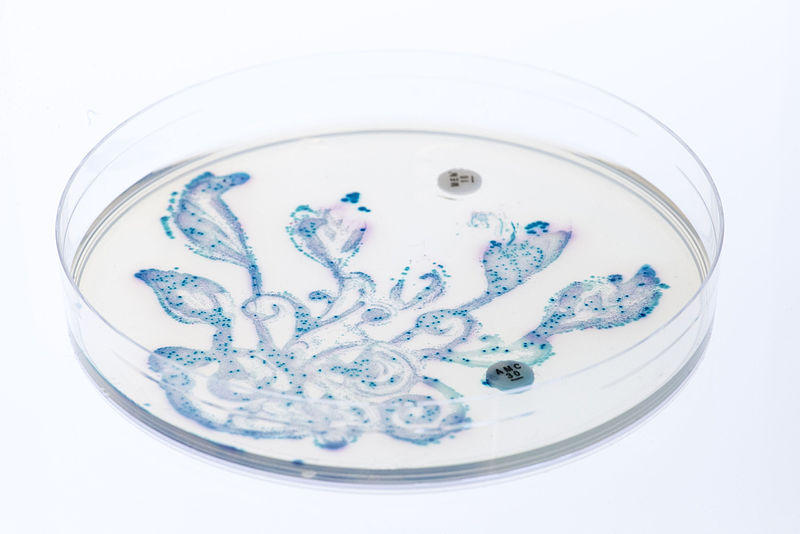A Biomedical Tattoo that can Detect Cancer-Related Hypercalcemia
Currently, more emphasis is being placed on practicing preventative measures to ward off disease. This is because for many diseases, early detection minimizes the impacts. With this goal in mind, researchers from the Swiss Federal Institute of Technology in Zurich, Switzerland have created a medical technology a biological cell-based tattoo that can detect certain cancers earlier, leading to improved prognosis and treatment.
Hypercalcemia, a condition in which calcium levels in the blood are above normal, can be found alongside many types of cancers, such as breast and colon cancer. These abnormally high levels of calcium can be observed in cancer patients due to immune cells targeting the tumor release substances that disrupt the body’s normal calcium homeostasis, or balance. Because certain types of cancers are associated with unusually high levels of blood calcium in the body, the researchers were able to create a technology that could alert patients and doctors when blood calcium levels spiked, indicating a possibility of cancer.
Hypercalcemia, a condition in which calcium levels in the blood are above normal, can be found alongside many types of cancers, such as breast and colon cancer. These abnormally high levels of calcium can be observed in cancer patients due to immune cells targeting the tumor release substances that disrupt the body’s normal calcium homeostasis, or balance. Because certain types of cancers are associated with unusually high levels of blood calcium in the body, the researchers were able to create a technology that could alert patients and doctors when blood calcium levels spiked, indicating a possibility of cancer.
The researchers underwent several tests as they developed their technology. They used CaSR, a receptor in the body that can sense calcium; this calcium-sensing receptor is sensitive enough to detect even mild hypercalcemia. Thus, the technology – modified cells that are injected into the patient and can act as a tattoo when triggered – contains two main parts. First, it has a hypercalcemia sensor that constantly measures and screens the body’s calcium levels; this is the CaSR. Second, it has a promoter-driving expression of tyrosinase, a pigment-producing enzyme. This means that when the CaSR senses high calcium levels, it will signal for tyrosinase to be expressed. Tyrosinase is an enzyme that starts the production of melanin, which affects skin color. Therefore, the production of tyrosinase will cause a black mark – a tattoo – to appear on the patient’s skin. Researchers made sure that only long-term hypercalcemia triggered the melanin production. To create the engineered tattoo-cells, researchers used HEK-293 cells, or human embryonic kidney cells. To test their technology, the cells were injected into nude mice with asymptomatic, hypercalcemic breast and colon cancer; asymptomatic cancers are types of cancers whose symptoms do not show up in a patient. The cells were also injected into nude mice with cancers that were not hypercalcemic (are not associated with high calcium levels) and into healthy nude mice. As expected, the results showed that only the mice with hypercalcemic, asymptomatic cancers developed a black spot on their skin. Afterwards, the researchers used the same procedure to test on wild-type mice, and the same results seen in the nude mice were produced.
The development of this technology has many benefits. With earlier diagnosis of asymptomatic, hypercalcemic cancer, which would not be easily detectable without the tattoo technology, patients’ treatment options and survival rates would improve. This is especially important for people who have undergone cancer treatment before and therefore need constant monitoring to check for relapse. The most promising result of the study was that no false positives formed; thus, researchers concluded that there is a very low chance that patients who do not have hypercalcemic cancers will develop a false black mark that could lead to false, unnecessary alarm. Finally, the procedure of injecting the genetically engineered tattoo cells into the skin is minimally invasive and would not require a complex, surgical procedure. Although researchers did not test this technology on humans, it holds promising results that could one day be extended to the human population and save lives. It is a technology to keep on the lookout for.
The development of this technology has many benefits. With earlier diagnosis of asymptomatic, hypercalcemic cancer, which would not be easily detectable without the tattoo technology, patients’ treatment options and survival rates would improve. This is especially important for people who have undergone cancer treatment before and therefore need constant monitoring to check for relapse. The most promising result of the study was that no false positives formed; thus, researchers concluded that there is a very low chance that patients who do not have hypercalcemic cancers will develop a false black mark that could lead to false, unnecessary alarm. Finally, the procedure of injecting the genetically engineered tattoo cells into the skin is minimally invasive and would not require a complex, surgical procedure. Although researchers did not test this technology on humans, it holds promising results that could one day be extended to the human population and save lives. It is a technology to keep on the lookout for.
Featured Image Source: jarmoluk
RELATED ARTICLES
|
Vertical Divider
|
Vertical Divider
|
Vertical Divider
|






